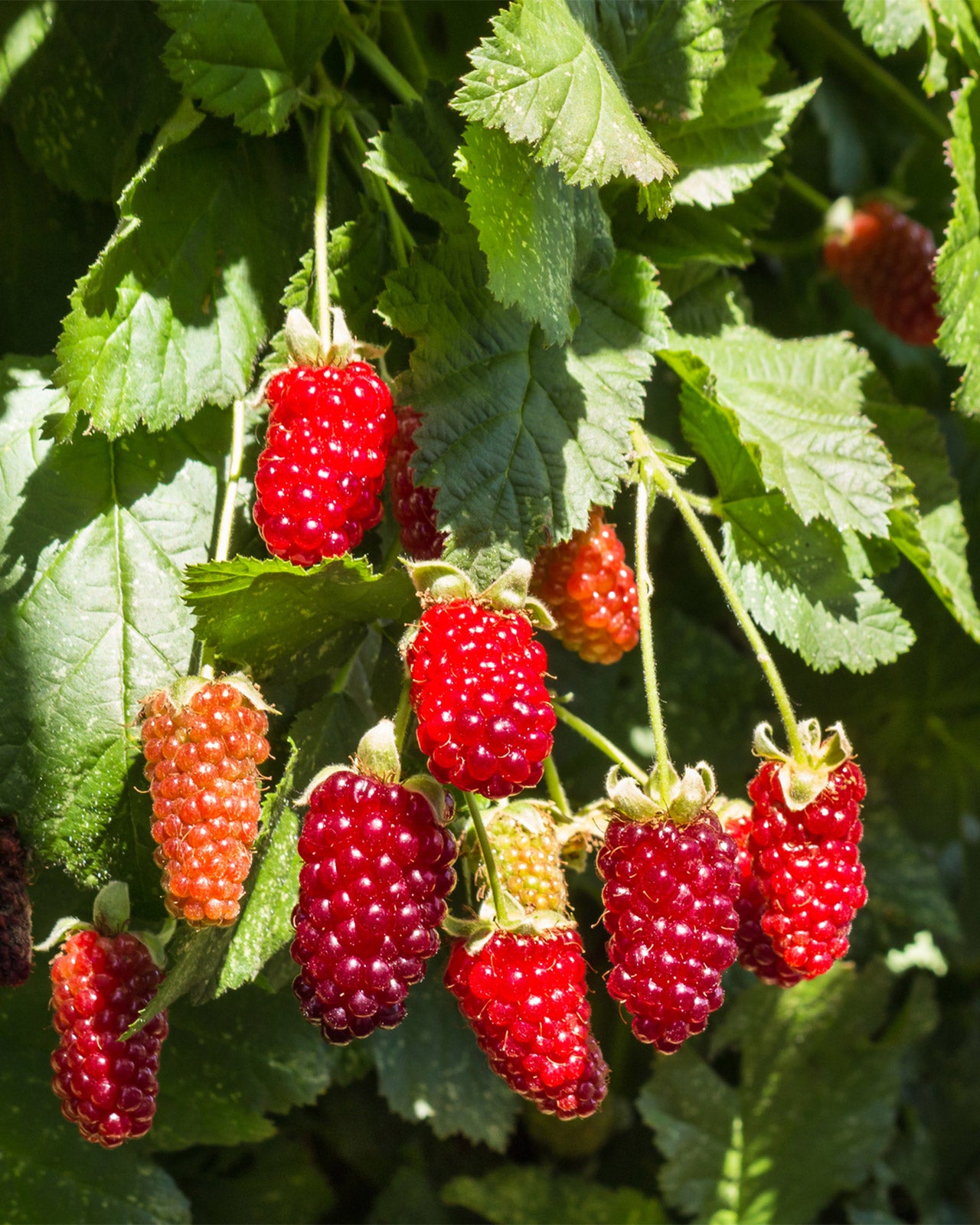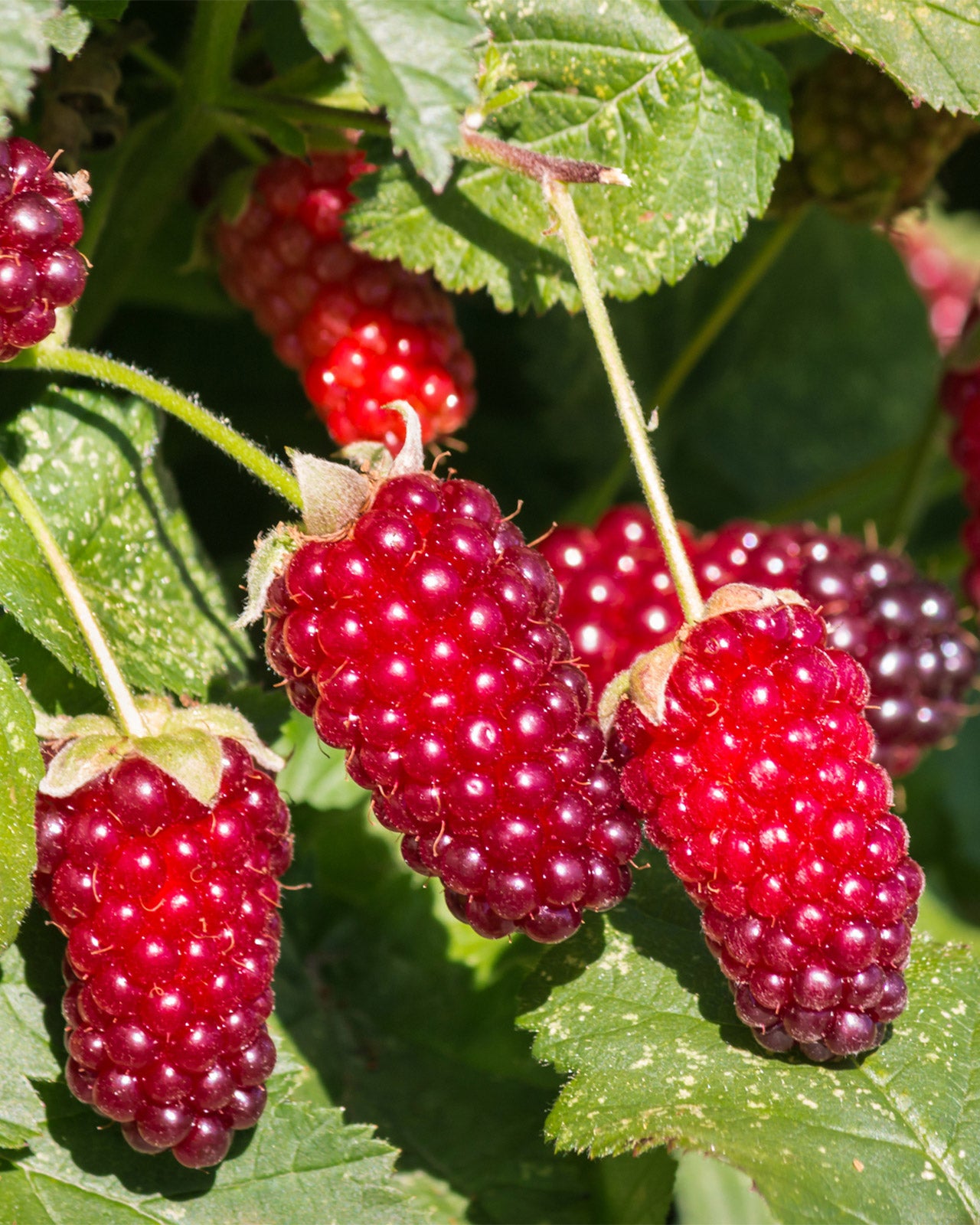

-
Why we like this plant
Want the depth of a blackberry and the zing of a raspberry in one bite? The loganberry delivers just that. It’s an under-the-radar garden hero: productive, flavour-packed, and surprisingly easy to grow. Once trained onto a trellis or fence, it rewards you with bowlfuls of berries that are brilliant for everything from breakfast smoothies to summer puddings.
-
About this plant
The loganberry is a hybrid fruit resulting from a cross between a raspberry and a blackberry, combining the best traits of both. It produces long, red to dark maroon berries that are juicy, tart, and rich in flavour — ideal for eating fresh, making jam, or baking. This vigorous, thorny bramble grows as a trailing shrub and benefits from support. With excellent yields and reliable performance, it’s a superb addition to the productive garden.
-
Key features
- Heavy cropping hybrid berry
- Unique raspberry-blackberry flavour
- Ideal for preserves and desserts
- Vigorous and long-lived
- Excellent pollinator-friendly flowers
-

Eventual height and
spreadHeight: 150–200cm | Spread: 200–300cm
-

Growth
habitTrailing canes that benefit from being trained along supports or trellis
-

Moisture
Moist but well-drained
-

Position in
the GardenAgainst a sunny wall, fence, or trellis
Planting guide
Plant in autumn or early spring. Choose a sheltered site with well-drained soil. Train the vigorous canes along wires or supports. Water well during dry spells, especially while establishing and during fruiting.
Care tips
Feed in spring with a general-purpose fertiliser. Mulch annually and prune out old fruiting canes after harvest. Tie in new growth to keep things tidy and productive.
Winter care
Cut back fruited canes to ground level in late autumn or winter, and tie in new growth. Mulch around the base with well-rotted compost or manure to protect roots and improve soil structure.











